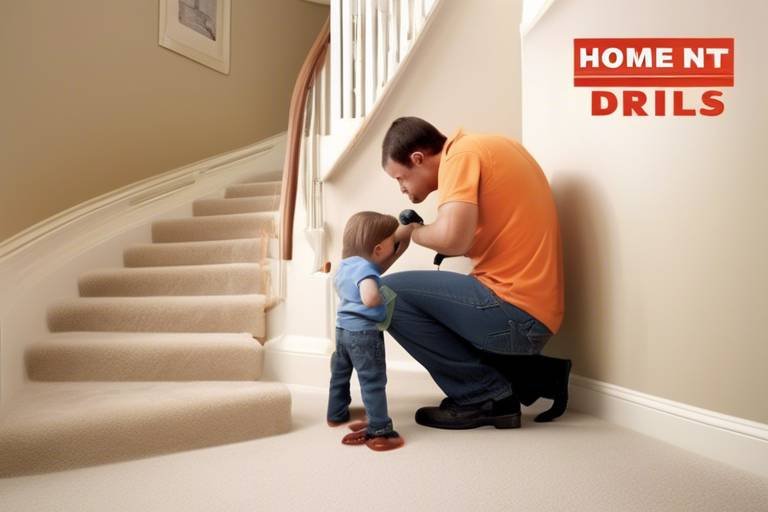Essential Safety Tips for Pet Owners
As a pet owner, ensuring the safety and well-being of your furry friends is not just a responsibility; it’s a commitment filled with love and care. Imagine your pet as a tiny family member who relies on you for protection, guidance, and companionship. Just like you would childproof your home, it’s equally important to create a secure environment for your pets. This article provides crucial safety tips for pet owners to ensure the well-being of their furry friends. From home safety to outdoor precautions, these guidelines help create a secure environment for pets.
Creating a pet-safe environment at home is essential. Your living space is a treasure trove of potential hazards that could harm your pet. From toxic plants to small objects that could be swallowed, being vigilant is key. Start by examining your home for common household hazards. For instance, many household cleaners contain chemicals that are harmful to pets. Make sure to store these products out of reach or in locked cabinets. Additionally, be cautious about leaving out food items that could be toxic, such as chocolate, grapes, and onions. It’s always better to be safe than sorry!
Consider using baby gates to restrict access to certain areas of your home, such as staircases or rooms with fragile items. This not only keeps your pets safe but also protects your belongings. Don't forget to secure electrical cords and hide them away to prevent chewing. Lastly, ensure that windows and balconies are pet-proofed to avoid any accidental falls. By taking these simple steps, you can significantly reduce the risk of accidents and injuries in your home.
When taking pets outside, specific precautions are necessary. Just like you wouldn’t let a child run free in a busy street, you need to keep a close eye on your pets outdoors. The great outdoors can be filled with both adventures and dangers. Always use a leash when walking your dog, as it helps maintain control and keeps them safe from traffic or other animals. Moreover, make sure to choose a leash that is appropriate for your pet's size and strength. Safety first!
Proper leash training is vital for safety during walks. Imagine trying to walk a toddler who refuses to hold your hand; it can be chaotic! The same goes for pets. Training your dog to walk calmly on a leash not only makes walks more enjoyable but also keeps them safe. Start by introducing the leash in a calm environment and reward your pet for staying close to you. Gradually increase the level of distraction as your pet becomes more comfortable. Consistency is key—practice regularly to reinforce good behavior.
Selecting an appropriate leash can enhance safety. There are various types of leashes available, such as standard, retractable, and padded leashes. Each serves a different purpose, and choosing the right one can make a world of difference. For example, a standard leash is often best for training, while a retractable leash can give your pet more freedom in open areas. Always consider your pet's size, strength, and temperament when making your choice.
Being aware of potential hazards while walking is crucial. Just as you would watch for traffic when crossing the street, keep an eye out for things like broken glass, sharp objects, or aggressive animals. Avoid busy roads and choose quieter paths for walks whenever possible. If your pet is prone to chasing after squirrels or other animals, consider using a harness for added control. Stay alert and keep your eyes peeled!
Ensuring your pet has proper identification is essential for their safety. Imagine the panic of losing your furry friend! Having a reliable form of identification can make all the difference in reuniting with your pet. There are several methods to ensure your pet is identifiable, including microchipping and ID tags. Microchips are a permanent solution that can be scanned by veterinarians or shelters, while ID tags provide immediate identification. Make sure the information on the tags is up to date, including your phone number and address.
Being prepared for emergencies can save lives. Just like you would have a fire escape plan for your family, it's crucial to include your pets in your emergency preparedness plans. Natural disasters, such as hurricanes or earthquakes, can strike without warning. Have an emergency kit ready that includes food, water, medications, and a first aid kit for your pets. Don’t wait until it’s too late!
A well-stocked first aid kit can be invaluable. Just as you would for yourself, keep a first aid kit specifically for your pets. Essential items to include are gauze, antiseptic wipes, tweezers, and a digital thermometer. Familiarize yourself with how to use these items effectively in emergencies. Remember, a little preparation goes a long way in keeping your furry friends safe.
Developing an evacuation plan is crucial for pet safety during emergencies. Your plan should include routes that are pet-friendly and accommodations that allow pets. Practice your evacuation plan with your pets so they are familiar with the process. Having a designated spot for your pets to go during an emergency can help reduce their anxiety. Planning ahead can make all the difference!
- What should I do if my pet goes missing? Immediately start searching the area, ask neighbors, and contact local shelters. Use social media to spread the word.
- How can I keep my pet safe during holidays? Be cautious of decorations, food, and guests that may not be familiar with your pet.
- What are the signs of a pet emergency? Signs include difficulty breathing, excessive vomiting, or severe lethargy. If you notice any of these, seek veterinary help immediately.
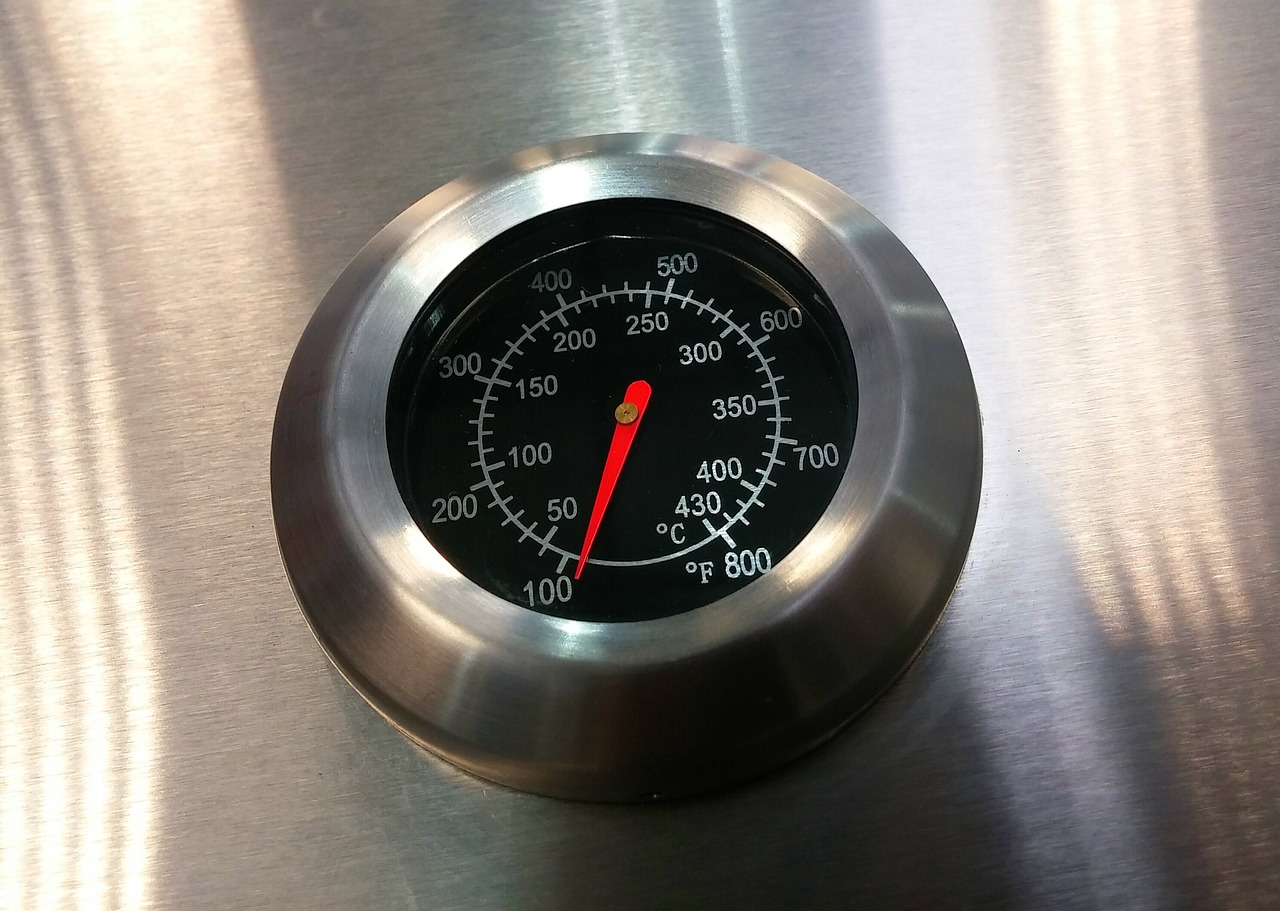
Home Safety Measures
Creating a pet-safe environment at home is essential for the well-being of your furry friends. Pets, whether they’re playful puppies or wise old cats, are naturally curious creatures. This curiosity can lead them into trouble if their surroundings are not properly secured. Think of your home as a playground for your pets; you wouldn't want them to get hurt while having fun, right? By eliminating common household hazards, you can ensure that your home is a safe haven for your beloved companions.
Start by identifying potential dangers lurking in your home. For instance, many household items can be toxic to pets. Common culprits include:
- Cleaning Supplies: Many cleaning products contain chemicals that can be harmful if ingested. Always store these items in cabinets that are out of reach.
- Food Items: Foods like chocolate, grapes, and onions are toxic to pets. Make sure to keep them securely stored away.
- Plants: Some houseplants, such as lilies and philodendrons, can be dangerous for pets. Opt for pet-safe plants to decorate your home.
Next, consider the layout of your living space. Ensure that there are no loose wires or cords that your pet could chew on, as this poses a serious risk of electrocution. Additionally, keep small objects like coins, batteries, and toys out of reach, as these can be choking hazards. You might want to think of your home as a toddler-proofed space, where everything is organized and out of harm's way.
Another important aspect of home safety is creating a designated area for your pets. This could be a cozy corner with their bed, toys, and food. Having a specific spot helps them feel secure and allows you to monitor their activities more easily. Consider using baby gates to restrict access to certain areas of your home, especially if you have stairs or rooms that could pose a risk.
Moreover, ensure that windows and balconies are secure. Pets are known to be adventurous, and a curious cat or a dog can easily leap from a window or balcony if not properly secured. Installing screens or using window locks can prevent accidental falls and keep your pets safe while allowing fresh air into your home.
Lastly, it’s crucial to have a plan in place for emergencies. This includes knowing the location of your nearest veterinary clinic and having a list of emergency contacts readily available. You might even consider assembling a pet emergency kit, which includes food, water, and essential medications. Just like you would prepare for a family emergency, having a plan for your pets ensures that you’re ready for anything that comes your way.
In conclusion, pet-proofing your home is not just about eliminating hazards; it’s about creating a safe and nurturing environment where your pets can thrive. By being proactive and mindful of their needs, you can enjoy peace of mind knowing that your furry friends are safe and sound in their favorite place—your home.

Outdoor Precautions
When it comes to taking your beloved furry companions outside, safety should always be your top priority. After all, the great outdoors can be full of surprises—some pleasant, and some not so much. It's essential to adopt certain precautions to ensure your pets enjoy their outdoor adventures without any unnecessary risks. Think of it as setting up a protective bubble around them, allowing them to explore while keeping potential dangers at bay.
First and foremost, using a leash is not just a suggestion; it's a necessity. Many pet owners might think their dogs or cats will behave perfectly off-leash, but let’s face it—there’s always a chance they could get distracted by a squirrel or another pet. A sturdy leash provides you with control and keeps your pet safe from unexpected hazards. Plus, it helps you avoid potential accidents with vehicles or other animals. Just imagine the peace of mind you’ll have knowing your pet is secure while enjoying the fresh air!
Proper leash training is an essential skill for both you and your pet. It’s not just about holding the leash; it’s about teaching your pet to walk beside you without pulling or lunging at distractions. This not only makes walks more enjoyable, but it also reduces the risk of accidents. Techniques such as positive reinforcement can work wonders—reward your pet for walking calmly beside you, and soon they’ll associate good behavior with treats. It’s like teaching them a new dance; the more they practice, the better they get!
When it comes to leashes, one size definitely does not fit all. The right leash can enhance both your safety and your pet's comfort. For smaller breeds, a lightweight leash might suffice, while larger dogs may require something more durable. Consider the following options:
| Leash Type | Best For | Key Features |
|---|---|---|
| Standard Leash | Most dogs | Durable, various lengths |
| Retractable Leash | Energetic dogs | Allows freedom, adjustable length |
| Adjustable Leash | Variety of sizes | Multiple lengths for different situations |
Choosing the right leash is like picking the perfect outfit for an occasion—it can make all the difference in how comfortable and secure you both feel.
While walking your pet, being aware of potential hazards is crucial. Just as you wouldn’t stroll through a construction site without caution, you should be vigilant about your surroundings during walks. Here are some common dangers to keep an eye out for:
- Traffic: Always stay alert near roads and crossings.
- Other animals: Not all pets are friendly, so be prepared for encounters.
- Sharp objects: Broken glass, metal scraps, and other debris can injure your pet’s paws.
- Plants: Some plants can be toxic if ingested, so knowing what’s in your area is key.
By being proactive and aware of these hazards, you’ll be better equipped to protect your furry friend from harm.
In conclusion, outdoor precautions are not just about enjoying the fresh air; they are about ensuring your pet has a safe and fun experience. By using a leash, training your pet, and being aware of your surroundings, you create a secure environment for them to explore. So, the next time you step outside with your furry friend, remember: a little caution goes a long way in keeping them safe and happy!
Q: What should I do if my dog pulls on the leash?
A: Use positive reinforcement techniques to encourage your dog to walk calmly beside you. Reward them with treats when they walk without pulling.
Q: Is it safe to use a retractable leash?
A: Retractable leashes can be safe if used correctly, but they may not be ideal in crowded areas or near traffic. Always assess the environment before using one.
Q: How can I tell if a plant is toxic to my pet?
A: Research local flora and consult with your veterinarian to identify any plants that may pose a risk to your pet's health.

Leash Training
When it comes to taking your furry friend for a walk, leash training is absolutely crucial. Imagine stepping out the door, and your pet is pulling you in every direction, eager to chase after anything that moves. It can be quite the chaotic scene! Proper leash training not only ensures that your walks are enjoyable but also keeps your pet safe from potential dangers. So, how do you go about it? Well, let’s dive into some effective techniques that will help both you and your pet master the art of walking on a leash.
First off, it’s essential to start leash training in a calm environment. Choose a quiet area, free from distractions, where your pet can focus on you. Begin by letting them get used to wearing the leash and collar. Allow them to roam a bit in your home while attached to the leash, so they associate it with positive experiences. Once they seem comfortable, it’s time to move outside.
One effective technique is the “stop and go” method. As you walk, if your pet starts to pull ahead, simply stop walking. Stand still and wait for them to return to your side. When they do, reward them with praise or a treat. This teaches them that pulling doesn’t get them where they want to go, but walking nicely by your side does. Consistency is key here; the more you practice this, the more your dog will understand the rules of the leash.
Another important aspect of leash training is using the right equipment. A standard leash is usually best for training, but you might want to consider a no-pull harness if your pet is particularly strong or stubborn. Here’s a quick comparison of different leash types:
| Leash Type | Pros | Cons |
|---|---|---|
| Standard Leash | Simple, effective for training | Can be difficult for strong pullers |
| Retractable Leash | Gives pet more freedom | Can lead to pulling and tangling |
| No-Pull Harness | Reduces pulling, better control | Can be more expensive |
Moreover, keep the walks engaging. Use treats or toys to keep your pet motivated. If they walk nicely beside you, reward them! You can also incorporate short training sessions during your walks, practicing commands like “sit” or “stay” to keep their minds active. This not only reinforces good behavior but also strengthens your bond.
Lastly, remember that patience is vital. Every dog learns at their own pace, and some may take longer to grasp the concept of leash walking than others. Celebrate small victories along the way and keep the experience positive. After all, the goal is to make walks a fun and safe activity for both you and your pet!
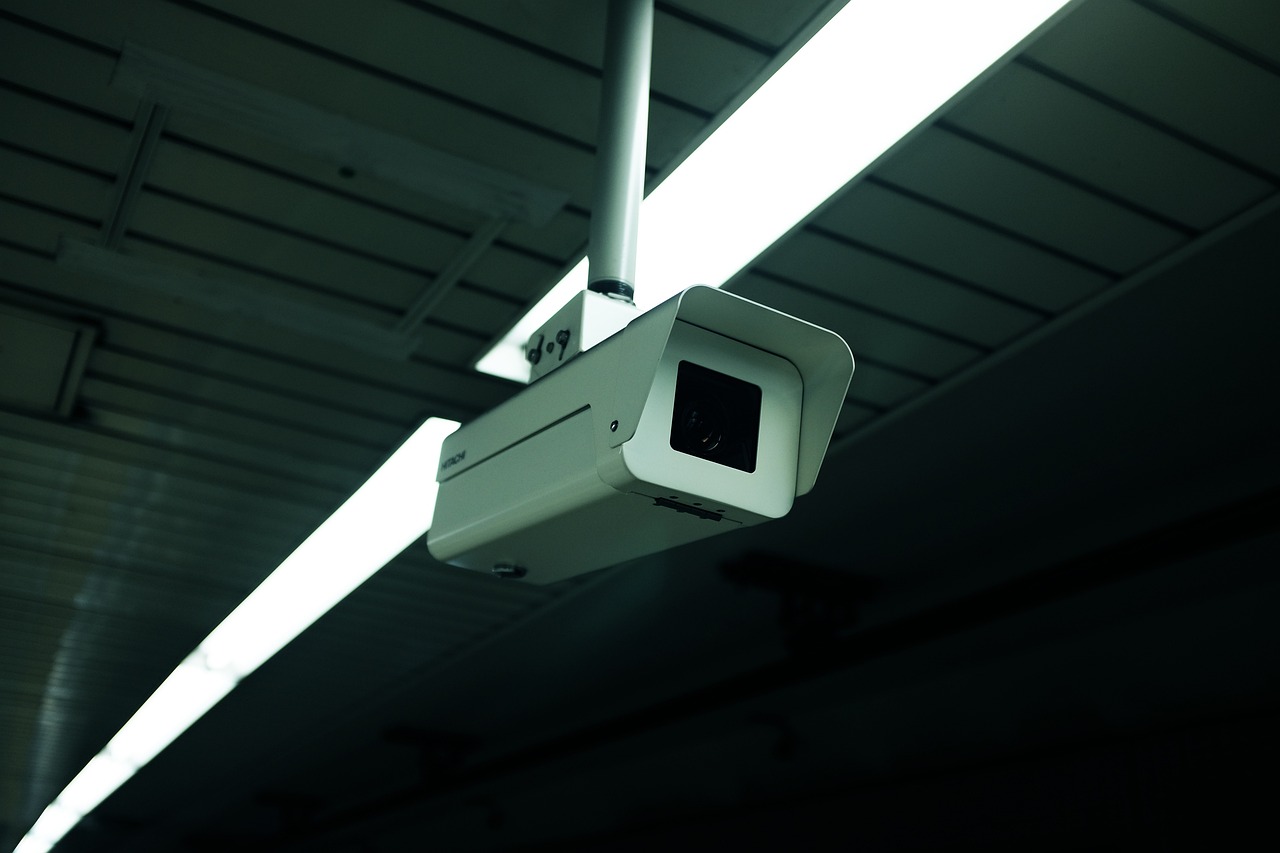
Choosing the Right Leash
When it comes to ensuring the safety of your furry friend during walks, choosing the right leash is absolutely crucial. A leash is more than just a tool for restraint; it’s your primary line of defense against potential dangers like traffic, other animals, and unexpected situations. The right leash can make all the difference in how you and your pet experience outdoor adventures together.
First, let's talk about the different types of leashes available on the market. Each type has its own unique features and benefits, making it essential to select one that suits both your pet's needs and your walking style. Here are some common leash types to consider:
- Standard Leash: Typically 4 to 6 feet long, this leash offers control and is perfect for everyday walks. It’s a great choice for most dogs, providing a good balance between freedom and restraint.
- Retractable Leash: These leashes allow your pet to roam further while still being attached to you. However, they can be tricky to manage and may not be suitable for all dogs, especially those that are easily distracted or have a tendency to pull.
- Training Leash: Longer than standard leashes, these are designed for training purposes, allowing your dog to explore while maintaining control. They can be particularly useful for teaching recall commands.
- Chain Leash: Made of metal, chain leashes are durable and chew-resistant, making them ideal for strong or aggressive chewers. However, they can be heavier and less comfortable to hold.
When selecting a leash, also consider your pet's size, strength, and behavior. For example, a small dog may only need a lightweight standard leash, while a large, strong breed might require something sturdier. Additionally, if your pet tends to pull or is easily distracted, investing in a no-pull harness along with a suitable leash can improve your control during walks.
Another important factor to consider is the material of the leash. Nylon leashes are popular for their lightweight and easy-to-clean properties, while leather leashes offer durability and a classic look. However, leather may require more maintenance to keep it in good condition. Think about your lifestyle and how often you'll be using the leash to determine which material is best for you.
Lastly, don’t forget about the leash length. A longer leash can provide more freedom for your dog to explore, but it may also lead to less control in crowded or busy areas. Conversely, a shorter leash allows for better control but may restrict your pet's movement. Finding the right balance is key to ensuring both your safety and your pet's enjoyment during walks.
In summary, choosing the right leash involves considering your pet's size, behavior, and the walking environment. By selecting a leash that caters to these factors, you can ensure that your walks are safe, enjoyable, and stress-free for both you and your furry companion.
Q: What length of leash is best for my dog?
A: A standard leash length of 4 to 6 feet is generally recommended for most dogs, providing a good balance of control and freedom. However, if you're training or in a more open area, a longer leash may be beneficial.
Q: Should I use a retractable leash?
A: Retractable leashes can be great for dogs that are well-trained and can follow commands, but they can pose risks in crowded areas. Always assess your dog's behavior before deciding on this type of leash.
Q: What material is best for a leash?
A: Nylon is popular for everyday use due to its lightweight and easy maintenance. Leather offers durability but requires more care. Choose based on your lifestyle and how often you plan to use the leash.
Q: Can I use a leash with a harness?
A: Absolutely! A harness can provide better control and comfort, especially for dogs that pull. Pairing a harness with a suitable leash is often recommended for a safer walking experience.
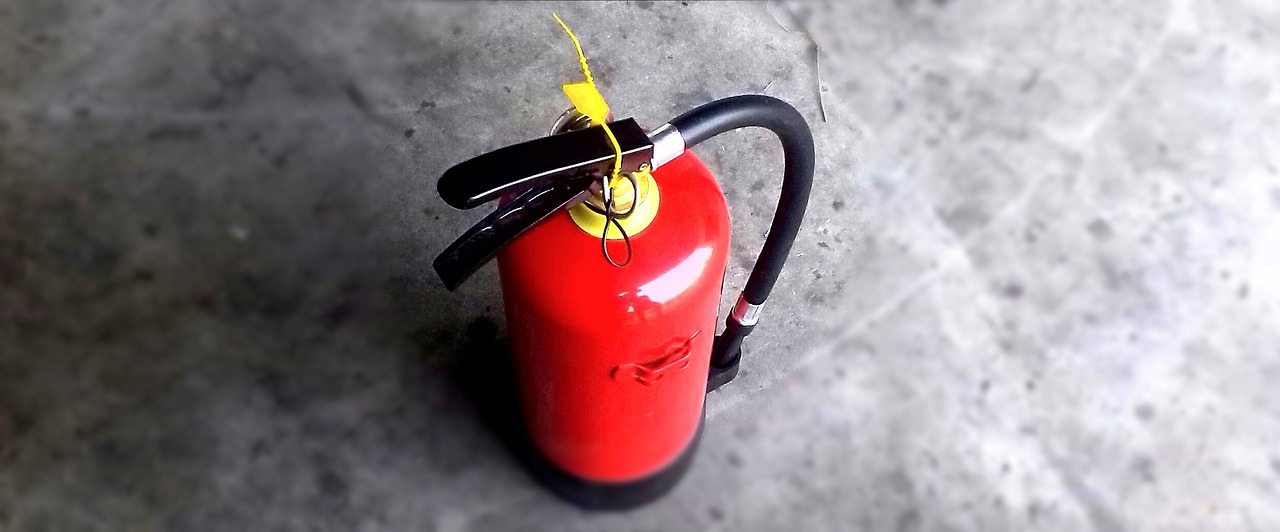
Common Walking Hazards
When it comes to taking your furry friend for a walk, the excitement is palpable, but so are the hidden dangers lurking around every corner. Just like a game of hide-and-seek, you never know what hazards might be waiting for you and your pet. Being aware of these potential risks can make all the difference in ensuring a safe outing. Here are some common walking hazards to keep in mind:
First and foremost, traffic is a significant concern. Busy streets can be overwhelming for pets, especially if they are not accustomed to the sounds and sights of vehicles. Always stay vigilant and keep your pet on a leash, ensuring they are securely attached to you. A sudden movement or a loud noise can cause them to bolt into traffic, leading to potentially fatal consequences.
Another hazard to be mindful of is loose dogs. While most dogs are friendly, some may not take kindly to your pet's presence. An unexpected encounter with an aggressive or overly excited dog can turn a pleasant walk into a stressful situation. Always be cautious and ready to change your route if you spot a loose dog approaching.
Additionally, the environment itself can pose threats. Uneven surfaces, such as cracked sidewalks or loose gravel, can lead to slips and falls for both you and your pet. It's essential to maintain a steady pace and watch where you're stepping. If your pet is older or has mobility issues, consider choosing smoother paths to minimize the risk of injury.
Moreover, keep an eye out for toxic plants. Many common plants, such as certain types of lilies and azaleas, can be harmful to pets if ingested. If your pet is prone to sniffing or nibbling on foliage, take extra precautions by avoiding areas with dense vegetation. Familiarize yourself with local flora to identify any potential dangers.
Lastly, be wary of weather conditions. Extreme heat or cold can affect your pet's health. On hot days, asphalt can become blistering, leading to burned paws, while icy conditions can cause slips. Always check the weather before heading out and adjust your walking schedule accordingly. If it’s too hot or too cold, consider indoor activities or shorter walks.
By staying alert and being aware of these common walking hazards, you can create a safer experience for both you and your pet. Remember, a little caution goes a long way in ensuring your furry friend enjoys their outdoor adventures without unnecessary risks!
- What should I do if I encounter an aggressive dog while walking my pet?
Stay calm and avoid direct eye contact with the aggressive dog. Try to create distance between your pet and the aggressive dog. If possible, redirect your pet’s attention with treats or toys and calmly walk away.
- How can I tell if the pavement is too hot for my pet's paws?
Place your hand on the pavement for seven seconds. If it’s too hot for your hand, it’s too hot for your pet’s paws. Consider walking during cooler times of the day.
- Are there specific plants I should avoid during walks?
Yes, some common toxic plants include oleander, azaleas, and certain types of mushrooms. It's best to familiarize yourself with local flora and avoid areas with these plants.

Pet Identification
Ensuring your pet has proper identification is essential for their safety. Imagine this: your furry friend dashes out the door, and in the blink of an eye, they’re gone! Panic sets in, and your heart races. This is where effective pet identification comes into play. It’s not just a precaution; it’s a lifeline that can reunite you with your beloved companion. There are several methods to ensure your pet is identifiable, and each has its own set of advantages.
One of the most common methods is the use of ID tags. These small, metal or plastic tags hang from your pet’s collar and typically include your pet's name, your name, and a phone number where you can be reached. It’s a straightforward solution, but it does have its drawbacks. For instance, if the tag falls off or becomes unreadable, it may not serve its purpose. That’s why it’s wise to pair it with other identification methods.
Another effective option is microchipping. This process involves implanting a tiny chip under your pet's skin, which contains a unique identification number linked to your contact information. Microchips are permanent and can’t be lost or removed like ID tags. It’s a simple procedure done by a veterinarian, and once it’s in place, you can have peace of mind knowing that your pet can always be identified if they wander off.
It’s also beneficial to keep a recent photo of your pet on hand. In the unfortunate event that they go missing, having a clear, updated picture can make a world of difference when spreading the word or posting on social media. Not to mention, it helps others recognize your pet more easily. Consider creating a lost pet flyer that includes the photo, description, and your contact information. You can even set up a social media alert to reach a broader audience quickly.
Lastly, don’t underestimate the power of social media and community networks. Joining local pet groups or forums can provide valuable support and increase the chances of finding your lost pet. Share your pet's information and those cute pictures—because let’s be honest, who can resist a cute dog or cat?
In summary, combining multiple identification methods can significantly enhance your pet's chances of being returned home safely. Whether it’s a simple ID tag, a microchip, or community outreach, being proactive about pet identification is a step every pet owner should take. After all, your pet is more than just an animal; they’re family, and their safety is paramount.
- What should I include on my pet's ID tag? It's best to include your pet's name, your name, and a phone number. You can also add your address or a secondary contact if space permits.
- How often should I check my pet's ID tag? Regularly check your pet's ID tag to ensure it’s secure and the information is up to date, especially after moving or changing phone numbers.
- Is microchipping safe for my pet? Yes, microchipping is a safe and routine procedure performed by veterinarians. It’s a quick process with minimal discomfort.
- Can I track my pet with a microchip? No, microchips do not track your pet's location. They simply provide identification when scanned by a vet or shelter.
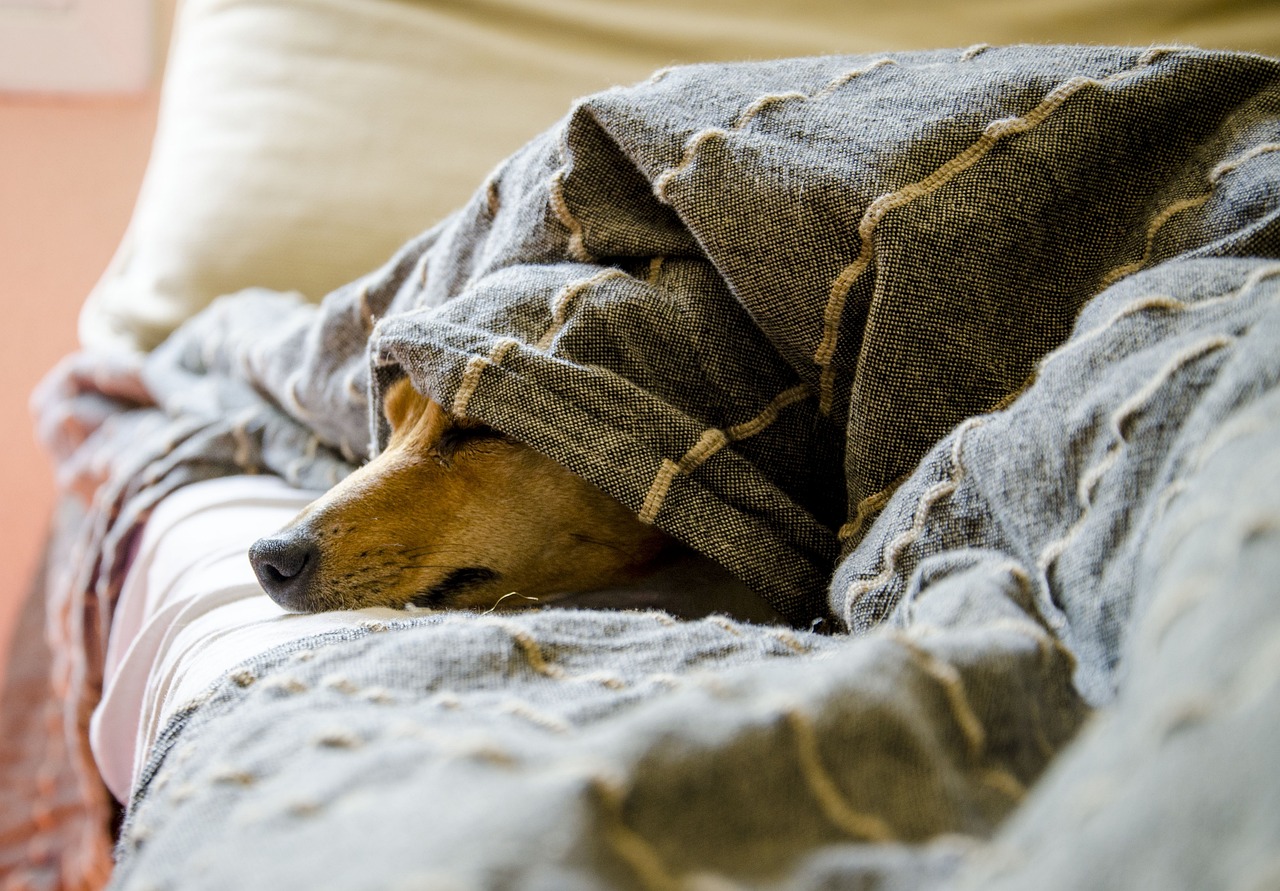
Emergency Preparedness
Being a responsible pet owner means preparing for the unexpected. Emergencies can strike at any moment, whether it’s a natural disaster like a hurricane or an unexpected household accident. The key to ensuring your furry friend’s safety lies in being proactive rather than reactive. So, what should you do to be fully prepared? Let’s dive into some essential strategies that can make all the difference when the unexpected happens.
First off, having a well-stocked first aid kit for your pet is crucial. Think of it as your pet's own little safety net. You wouldn’t head out on a road trip without a spare tire, right? Similarly, a first aid kit can be a lifesaver in emergencies. Here’s a quick overview of essential items you should include:
| Item | Purpose |
|---|---|
| Gauze and Bandages | To stop bleeding and protect wounds. |
| Antiseptic wipes | To clean wounds and prevent infection. |
| Pet-safe pain relievers | To manage pain in emergencies. |
| Tweezers | To remove splinters or ticks. |
| Thermometer | To check your pet’s temperature. |
But wait, there’s more! It’s not just about having a first aid kit. You also need to develop an evacuation plan that includes your pets. Imagine a scenario where you need to evacuate your home quickly. Would you know how to get your pets out safely? Here’s how to create an effective plan:
Start by identifying safe places where you can take your pets. This could be a friend’s house, a pet-friendly hotel, or a local shelter. Next, make sure your pets are comfortable with their carriers or crates. It’s essential they associate these with positive experiences. You wouldn’t want your pet to panic in a stressful situation!
Additionally, keep a list of emergency contacts, including your veterinarian's number and the nearest animal hospital. If you have multiple pets, consider having a buddy system in place where you and a friend can look out for each other’s pets during emergencies. It’s all about teamwork!
Lastly, don’t forget to include your pets in your family’s emergency drills. Just like you practice what to do in a fire or earthquake, involve your pets in these drills. This will help them get used to the routine and make it easier to manage them during a real emergency.
In summary, being prepared for emergencies is not just about having supplies; it’s about creating a comprehensive plan that ensures the safety of your furry companions. With a little bit of planning and foresight, you can significantly reduce the risk to your pets during unforeseen events.
- What should I include in my pet's first aid kit? A well-stocked kit should include gauze, antiseptic wipes, pet-safe pain relievers, tweezers, and a thermometer.
- How do I create an evacuation plan for my pets? Identify safe locations, ensure pets are comfortable with carriers, and keep emergency contacts handy.
- Should I practice emergency drills with my pets? Yes! Practicing helps your pets become familiar with the routine, making it easier to manage them in real emergencies.

First Aid Kits for Pets
Having a well-stocked first aid kit for your pets is an essential part of being a responsible pet owner. Just like humans, our furry friends can face unexpected accidents or health issues, and being prepared can make all the difference. Imagine your pet getting a cut while playing outside or experiencing a sudden allergic reaction; having the right supplies on hand can be a lifesaver. So, what should you include in your pet’s first aid kit? Here’s a handy breakdown of the essentials:
| Item | Purpose |
|---|---|
| Adhesive Bandages | To cover minor cuts and abrasions. |
| Antiseptic Wipes | To clean wounds and prevent infection. |
| Gauze Pads | For larger wounds that require more coverage. |
| Medical Tape | To secure gauze and bandages in place. |
| Scissors | To cut tape, gauze, or clothing if needed. |
| Digital Thermometer | To check for fever (normal range is 100-102.5°F). |
| Hydrogen Peroxide | To induce vomiting in case of poisoning (consult a vet first). |
| Pet First Aid Manual | To guide you through emergencies. |
In addition to these items, consider adding any specific medications your pet may need, such as antihistamines for allergic reactions or pain relief medications prescribed by your veterinarian. It's also a good idea to keep a list of emergency contacts, including your vet's phone number and the nearest emergency animal clinic, in your first aid kit. This way, if a situation arises, you won’t be scrambling to find the right numbers.
Remember, having a first aid kit is just the beginning. It's equally important to know how to use the items in the kit. You can take a pet first aid course to familiarize yourself with basic techniques, such as how to bandage a wound or how to perform CPR on your pet. Being educated and prepared can help you feel more confident when faced with an emergency.
Lastly, don’t forget to check your first aid kit regularly. Just like any good plan, it needs to be maintained. Make sure that the supplies are not expired, and replace any items that have been used. Keeping your pet's first aid kit updated ensures that you’re always ready to respond swiftly and effectively when your furry friend needs you the most.
Q: How often should I check my pet's first aid kit?
A: It's a good practice to check your pet's first aid kit every few months to ensure that all items are in good condition and not expired.
Q: Can I use human medications for my pet?
A: Some human medications can be safe for pets, but it's crucial to consult your veterinarian before administering any medication to ensure it's safe and appropriate for your pet's specific needs.
Q: Where should I keep the first aid kit?
A: Store your pet's first aid kit in a cool, dry place that is easily accessible in case of an emergency. Make sure all family members know where it is located.

Evacuation Plans
When it comes to the safety of our beloved pets, having a well-thought-out evacuation plan is not just a good idea; it's a necessity. Emergencies can strike at any moment—be it a natural disaster like a hurricane, wildfire, or even unforeseen events like a house fire. In these critical times, knowing exactly what to do can mean the difference between safety and chaos. So, how do you go about creating an effective evacuation plan that includes your furry family members?
First and foremost, you need to identify safe locations where you can take your pets. This could be a friend’s house, a family member’s place, or a designated pet-friendly shelter. Make sure these places are aware that you may be arriving with pets. It’s also wise to have a backup location in case your first choice is unavailable. Think of it as having a Plan B—always good to have!
Next, prepare a pet emergency kit. This kit should include essentials like food, water, medications, a leash, and any comfort items that can help soothe your pet during stressful times. You can even create a checklist to ensure you don’t forget anything when it’s time to evacuate. Here’s a quick overview of what to include:
| Item | Description |
|---|---|
| Food | At least a week's supply of your pet's regular food. |
| Water | Enough water for your pet for at least a week. |
| Medications | Any necessary medications your pet requires, along with instructions. |
| Leash and Carrier | A sturdy leash and a comfortable carrier for transport. |
| Comfort Items | A favorite toy or blanket to help reduce anxiety. |
Moreover, practicing your evacuation plan is crucial. Just like fire drills at school, you should practice with your pets. Make sure they are comfortable with their carriers and leashes, and know how to behave during the chaos of an emergency. This can help prevent panic and confusion when the time comes to leave your home.
Lastly, keep your pet's identification up to date. Ensure that they have a collar with an ID tag that includes your current contact information. Microchipping is also a fantastic option, as it provides a permanent form of identification. In the unfortunate event that you and your pet become separated, having these measures in place can significantly increase the chances of a reunion.
In summary, creating an evacuation plan for your pets is all about preparation, practice, and ensuring that your furry friends are as safe as possible during emergencies. By taking these steps, you not only protect your pets but also give yourself peace of mind, knowing that you're ready for whatever comes your way.
- What should I do if I can't take my pet with me during an evacuation? - Look for local pet shelters or ask friends or family if they can take your pet in temporarily.
- How can I help my pet adjust to being in a carrier? - Start by allowing them to explore the carrier at home. Place treats and toys inside to create a positive association.
- Is it necessary to have a pet emergency kit? - Absolutely! Just like you prepare for yourself, your pets also need supplies to stay safe and comfortable during an emergency.
Frequently Asked Questions
- What are some common household hazards for pets?
Common household hazards include toxic plants, chemicals, and small objects that pets might swallow. It's important to secure cleaning supplies, medications, and any items that could pose a choking hazard. Always keep a watchful eye on your furry friends to ensure they don’t get into anything dangerous!
- How can I make my home safer for my pets?
To create a safer environment, you can start by removing any toxic plants and securing cords and wires. Use baby gates to restrict access to certain areas, and ensure that windows and balconies are pet-proofed. Regularly check for any small items that could be ingested and keep hazardous materials out of reach!
- Why is leash training important for my pet?
Leash training is essential for keeping your pet safe during walks. A well-trained pet is less likely to dart into traffic or get into trouble with other animals. It also makes the experience more enjoyable for both you and your furry friend, allowing you to explore the outdoors with confidence!
- What should I consider when choosing a leash?
When selecting a leash, think about your pet's size, strength, and behavior. For smaller dogs, a lightweight leash may suffice, while larger breeds may require something sturdier. Additionally, consider the type of activities you’ll be doing—some leashes are better for hiking, while others are perfect for city walks!
- How can I ensure my pet is properly identified?
To ensure your pet is easily identified, use a combination of ID tags and microchipping. ID tags should include your contact information, while microchips provide a permanent form of identification that can be scanned by veterinarians or shelters. This way, if your pet ever gets lost, the chances of being reunited are much higher!
- What items should I include in a pet first aid kit?
A well-stocked pet first aid kit should include items like bandages, antiseptic wipes, tweezers, and a digital thermometer. Don’t forget to include any medications your pet may need and a copy of their medical records. Being prepared can make all the difference in an emergency!
- How can I create an effective evacuation plan for my pets?
To develop an evacuation plan, start by identifying safe places to go in case of an emergency. Make sure your pets are familiar with their carriers or crates, and practice loading them up quickly. Always keep a supply of food, water, and any necessary medications ready to grab on your way out!








